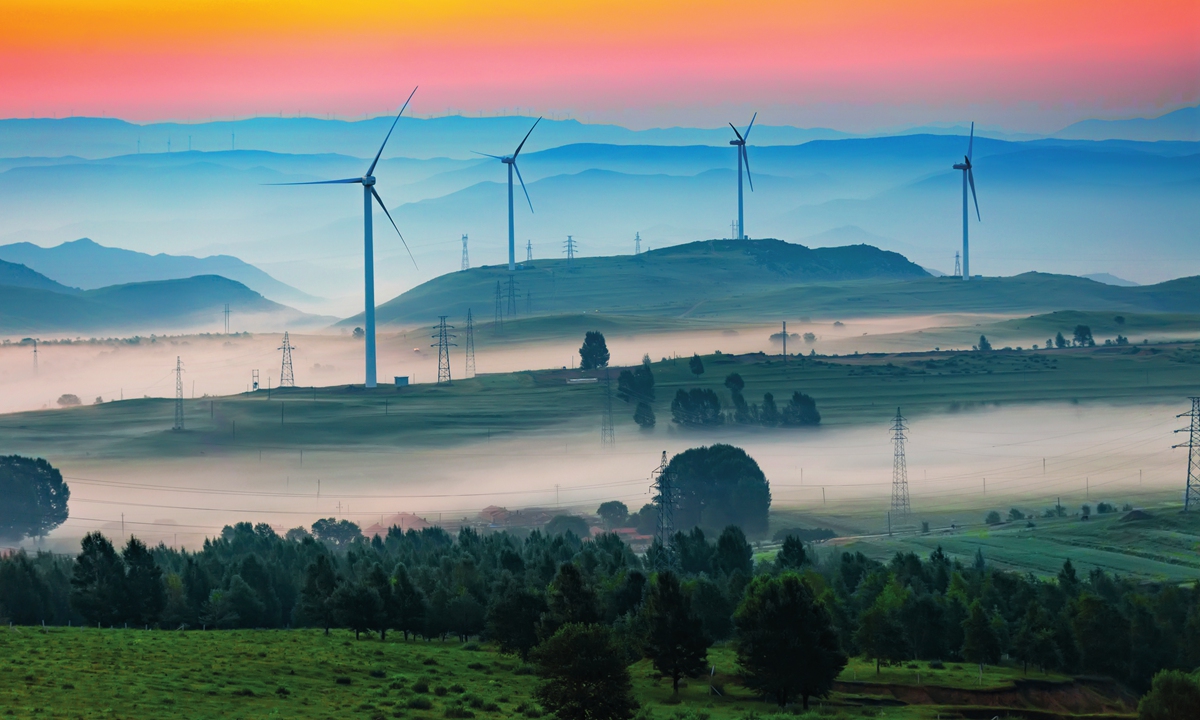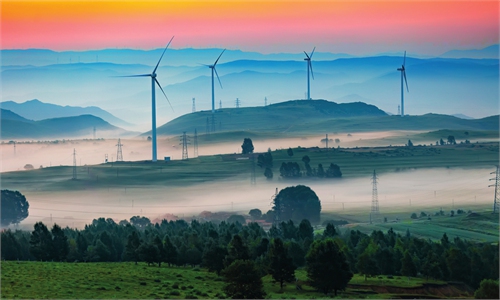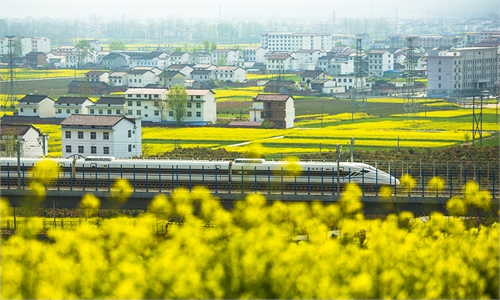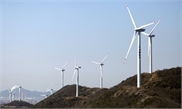Lawmakers, political advisors focus on ways to realize China’s carbon neutrality goal

Wind power plant in China Photo: IC
As China enters a crucial year for adjusting its energy industry toward a cleaner future, proposals and motions by deputies to the national legislature and members of the top political advisory body are focused on ways to realize China's ambitious carbon reduction goal. Some are suggesting that the implementation of China's new carbon emissions peak goal and carbon neutrality vision should be treated as an important political task by local officials.
In a proposal submitted by the Chinese Peasants and Workers Democratic Party, it suggested the electrification of terminal energy, speeding up the replacement of domestic bulk coal, coal-fired boilers and industrial coal furnaces, and reducing the proportion of coal consumption as soon as possible.
It also suggests the country raise the proportion of non-fossil energy in primary energy consumption to 20 percent or above by the end of the 14th Five-Year Plan (2021-25) period, and strive to reach 30 percent by 2030.
Zeng Yuqun, a member of the Chinese People's Political Consultative Conference (CPPCC) National Committee and founder and chairman of Contemporary Amperex Technology (CATL), suggested the country take a five-pronged approach to ensure its carbon neutrality goal.
Zeng proposed deepening power sector market reform, building up cloud-based energy storage platforms, installing more large-scale energy storage facilities, and power generation from new-energy sources, among others, according to a proposal by Zeng seen by the Global Times on Tuesday. CATL is one of the world's largest suppliers of batteries for electric vehicles.
Zhang Tianren, National People's Congress (NPC) deputy and chairman of Tianneng, a battery maker based in East China's Zhejiang Province, suggested the nation aggressively develop smart-technology-empowered energy storage facilities in hand with new-energy power generation units, and the use the function of the former to make up the disadvantage of the latter. Zhang suggested including energy storage into the energy section of the 14th Five-Year Plan to guide the benign development of the sector.
Li Jinbo, NPC deputy and an innovation center director with home appliance giant Midea, suggested that China introduce a carbon label, borrowing from the successful experience of the energy efficiency label to guide the industry toward low-carbon growth.
China produces 56 percent of the world's home appliances, and four in every five refrigerators and air conditioners are produced in China. Research has shown that 30 percent of residential carbon emissions stem from home appliances.
Li suggested the carbon label to detail a home appliance's emissions level and a ratio compared with standard value, according to a statement sent to the Global Times by the company.
The proposals came as carbon neutrality becomes a buzzword in the run up to China's two sessions.
These non-fossil energies would contribute to achieving the carbon peak goal and carbon neutrality vision, and the cost of some of them, such as wind power and solar power, has been quite low in China thanks to years of development, Ma Jun, director of the Beijing-based Institute of Public and Environmental Affairs, told the Global Times on Tuesday.
He noted that in the following five years, how to confront the pressure from the economic downturn and recovery from the epidemic while reaching the goals of carbon peak and carbon neutrality will be a major issue.
Minister of Ecology and Environment Huang Runqiu urged trading in the national carbon market to start before the end of June, while requesting local authorities to consider the implementation of carbon emissions peak and carbon neutrality as key political tasks.
China announced in 2020 bold goals to have carbon dioxide emissions peak before 2030 and achieve carbon neutrality by 2060, boosting efforts to cut carbon emissions.
Ma said that in previous local-level two sessions, carbon reduction was not mentioned as much. "Many regions are not ready yet. They have just started." He also implied that the Ministry of Ecology and Environment and institutes are trying to "disassemble" the carbon goals into different indexes, companies, local regions and time periods so that the goals could be reached year by year.
State Grid Corporation of China, a Fortune Global 500 firm, became on Monday the first centrally owned Chinese enterprise to release a plan for achieving carbon emission peak and carbon neutrality goals, envisioning 50 percent of the electricity transmitted on its vast network from clean energy sources by 2025.
Boosted by a focus put forward by NPC deputies and the CPPCC national committee members, carbon-neutrality-themed shares staged a rally in the Chinese stock markets on Tuesday, marking a bright spot as the Shanghai benchmark stock index slumped 1.21 percent.
At the close of trading on Tuesday, 27 companies under the carbon trading category posted a combined gain of 4 percent, leading all the other sectors.



